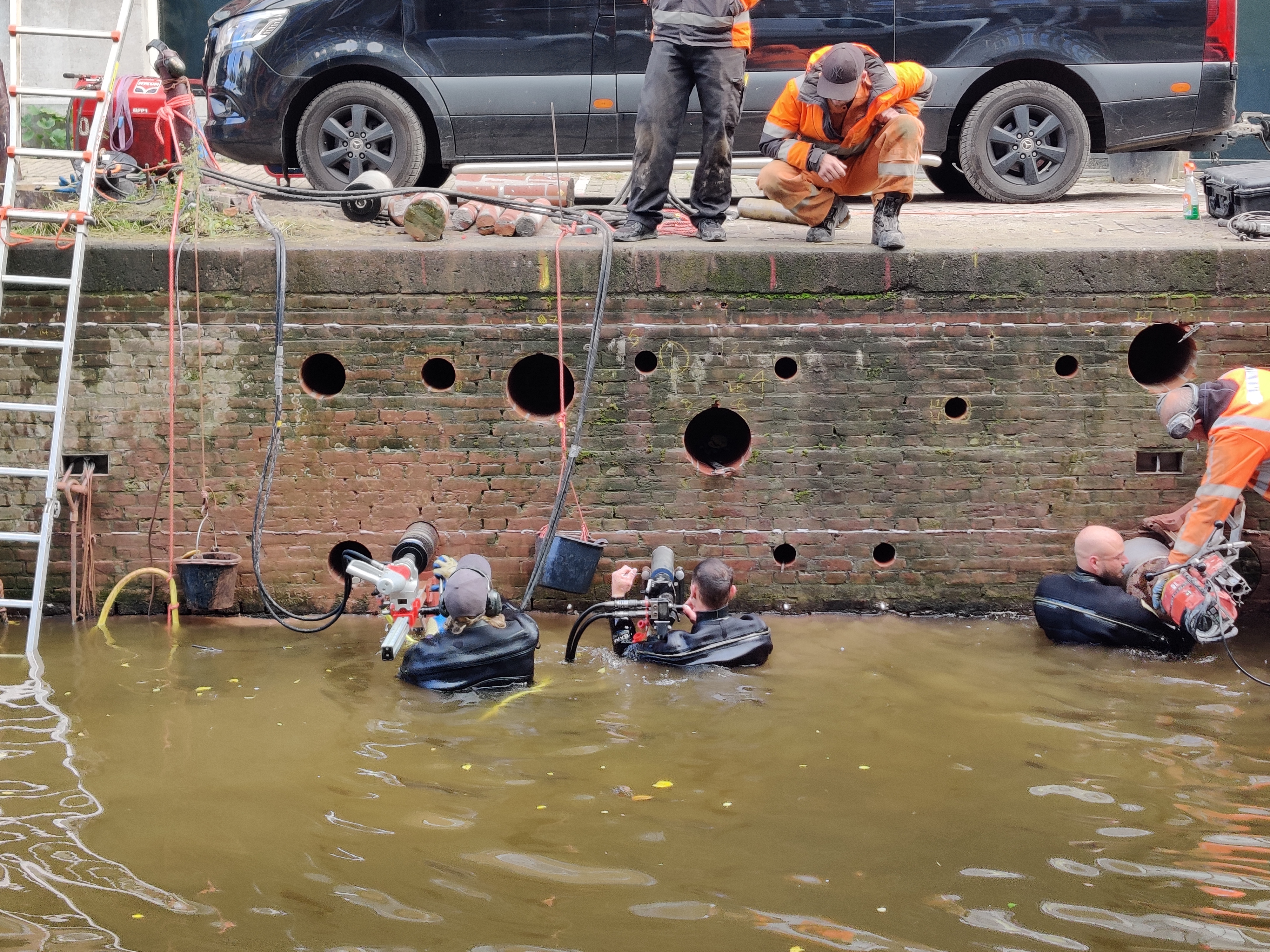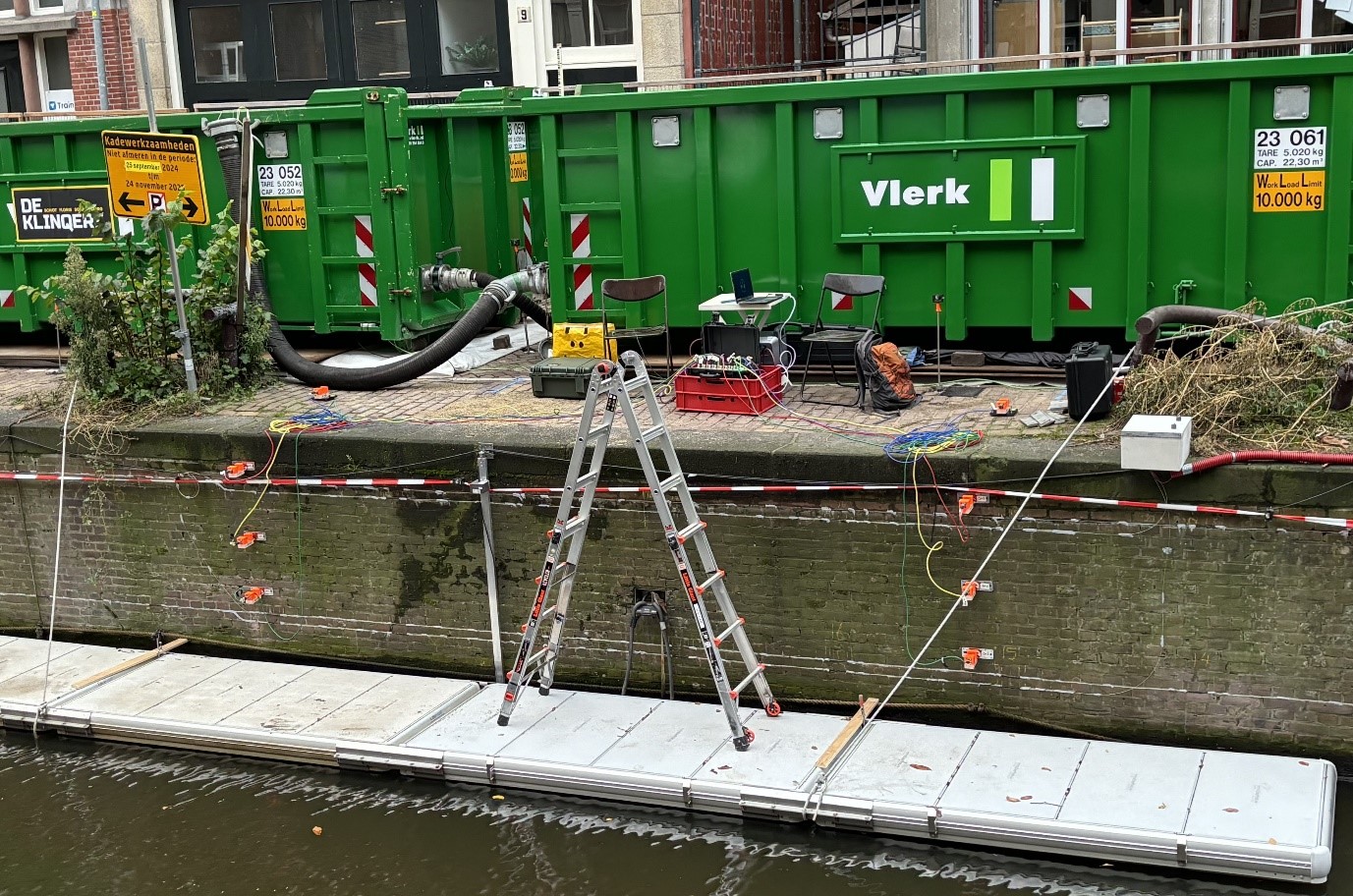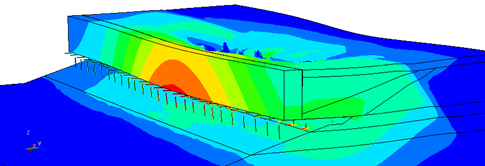Field test on historical quay wall
Various groups at TU Delft have joined forces to get the most out of a field test on a historical quay wall in the city centre of Amsterdam.
In September and October 2024, they placed a heavy load, in the form of a heavy truck first and waterfilled containers second, on the wall. The field test is part of the programme bridges and quay walls (programma Bruggen en kademuren, PBK).
A proxy for structural health
Daan ter Meulen and Alessandro Antonini from the Hydraulic Engineering department came in to execute vibration-based monitoring. Acceleration data of the quay wall was collected during the monitoring campaign to identify and compare the dynamic features of the structure (i.e. natural frequencies, mode shapes, and damping ratios) before and after the proof load test. This will indicate whether vibration-based monitoring can be a proxy for structural health assessment.
Characterising mechanical properties
Uday Jain and Rita Esposito, from Applied Mechanics section, took masonry samples to do laboratory tests to characterise mechanical properties. Constructed over a century ago, such quay walls were built using materials and techniques different from those commonly used today, leaving gaps in our understanding of their behaviour. The tests will clarify compressive, shear and bond properties and their variation through the thickness and along the height of the wall (above and below water).
Informed decisions for historic infrastructure
Satyadhrik Sharma, Michele Longo and Francesco Messali, from Applied Mechanics section, used the above to calibrate detailed numerical finite element models of the Amsterdam’s quays, in order to simulate scenarios across the city. It can provide valuable insights to support the City of Amsterdam in making more informed decisions for its historic infrastructure.
Deltares reseachers will evaluate the results of the field test to see if it is possible to update the reliability estimates of this and other quays in the city.



